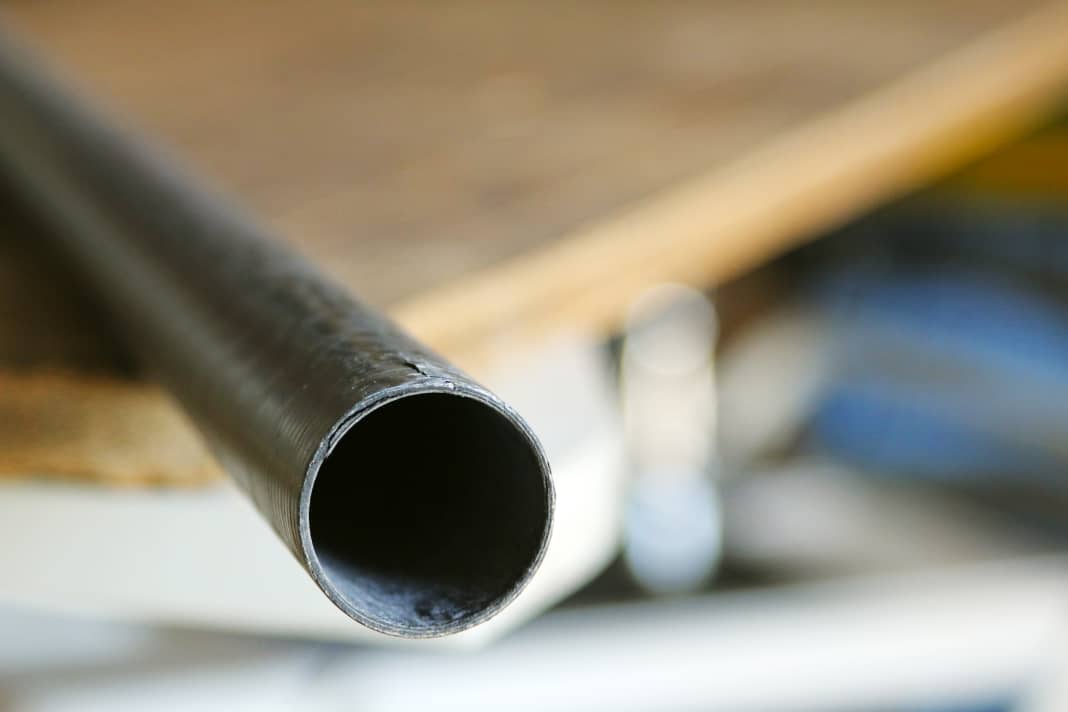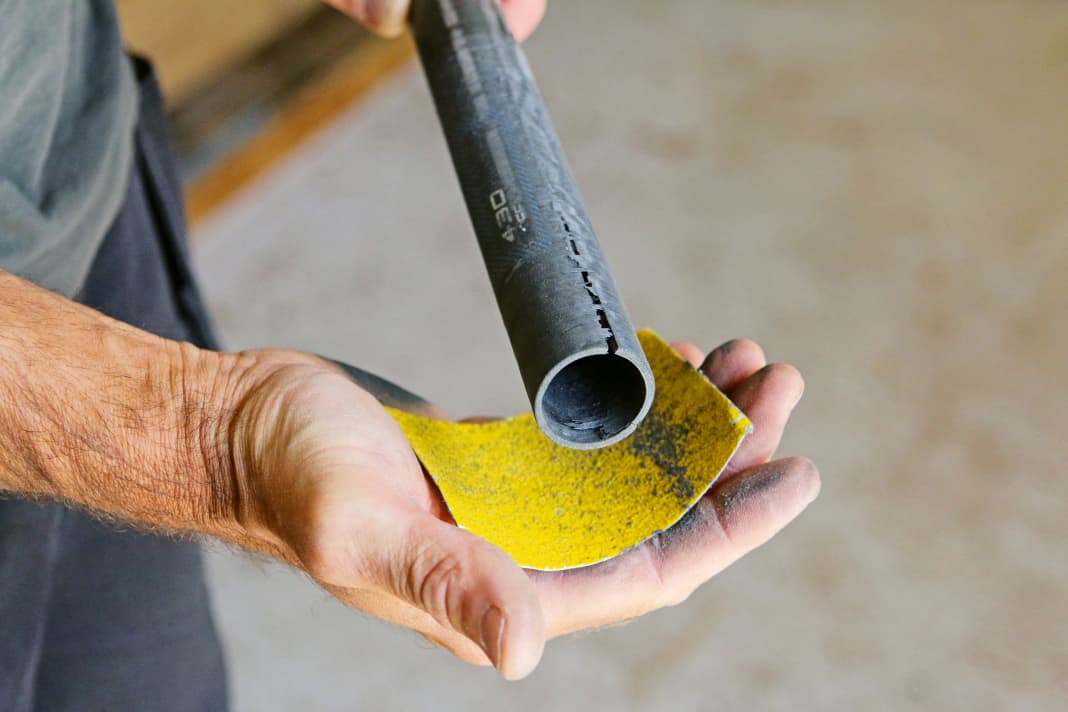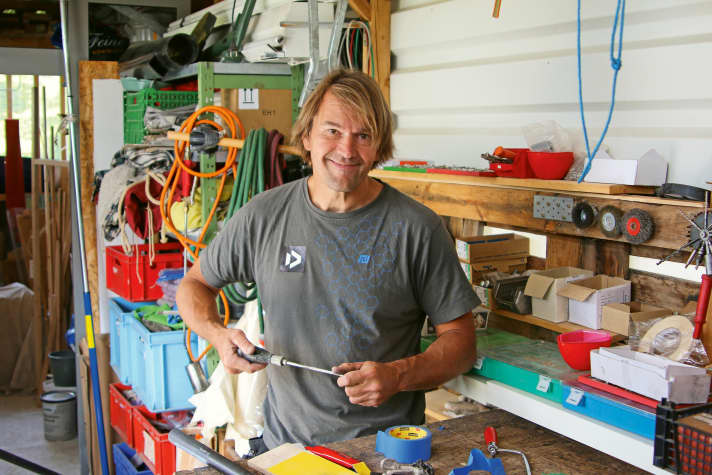
A small moment of carelessness and it's already happened: When setting up the mast, the mast halves are not properly connected and, after a courageous pull on the luff extrusion, an audible crack ends the day's surfing before it has even begun. In most cases, the mast is then torn at the connector - the same thing can happen if you drop the mast hard on the tarmac.
If the carbon only has a small crack a few centimetres long, it may be sufficient to simply saw off the damaged area. But there is a more elegant way - as repair expert Oliver Schott shows you below.
General information
The following repairs can be used for cracks at the bottom of the base (i.e. where the mast extension rests) or directly above the connector. These repairs can also be carried out on the top of the mast (in the area of the plug on the top) without any problems.
The basic repair takes less than ten minutes, for the professional version you should allow 60 to 90 minutes. "If you have the necessary tools," explains Oliver Schott, "there's no need to be shy. Repairing poles in this way saves money, makes sense in terms of sustainability and you don't have to worry that it won't last."
And this is how it's done!
Basic repair: sawing off masts
Both the base and the top of the mast can be shortened by a few centimetres without hesitation to remove a crack. "The bending curve," Oliver knows from his many years of experience, "doesn't change noticeably as a result. However, I wouldn't saw away more than five to ten centimetres at the top or bottom section, as otherwise you run the risk of the mast extension or connector no longer fitting due to the taper." It is logical that the mast will then be a few centimetres shorter - so you should make sure that you can still rig your own range of sails. If you already have to work with a long extension, it's better to do the professional repair that we show you on the following pages instead of sawing it off.
You will need the following for the basic repair with sawing:
- Metal saw
- Folding rule & pencil
- Dry sandpaper (e.g. 150 grit)
- Firm masking tape
Basic repair of masts - step-by-step instructions






Professional repair: Mast corset
If the crack is longer than eight to ten centimetres, sawing it off is usually no longer an option. If, for example, the upper section were to be shortened in this way, it would be unlikely that the mast sections could still be joined together afterwards. And even if the lower section is shortened, it is quite possible that the extension will no longer fit into the narrower mast. "Every carbon mast," explains Oliver Schott, "consists of vertical fibres inside, which absorb the actual forces and determine the flex of the mast. To hold these vertical fibres together, they are usually covered by a layer of fibres in the transverse direction. If the top layer is damaged, the fibres on the inside lack the lateral connection and the mast snaps. With the subsequent repair, we restore the damaged top layer," says Oli, explaining the background to the repair.
You can get most of the tools you need for this repair at your local DIY store:
- Metal saw & cutter knife
- Dry sandpaper (approx. 60 & 150 grit)
- Firm masking tape
- Low viscosity superglue
- Hose clamp with suitable screwdriver
- Mixing vessel/measuring cup, brush & rubber gloves for laminating
Furthermore, you will find the supplier Bacuplast ( www.bacuplast-shop.de ), a specialist in fibre composite technology, everything else you need:
- Low viscosity epoxy resin & hardener
- Roving 50K-3500 TEX. This is carbon fibre thread that is later wrapped around the crack. Two metres should be enough, a roll of 25 metres is sold for 9.75 euros
- Tear-off fabric 64 g/m2 (10 m roll with a width of 30 mm is available for 7.00 euros)
- Carbon fibre hose ø 50 mm; article no. 21 550. This hose is only necessary if the best possible appearance is important to you and can also be omitted. The running metre costs 8.95 euros.
Professional repair of masts - step-by-step instructions







Oliver Schott (to be found at Facebook ) is one of the veterans of the German Windsurf Cup and, as a boat builder and board repairer, is familiar with all materials. He regularly makes his knowledge available for the surf workshops.

